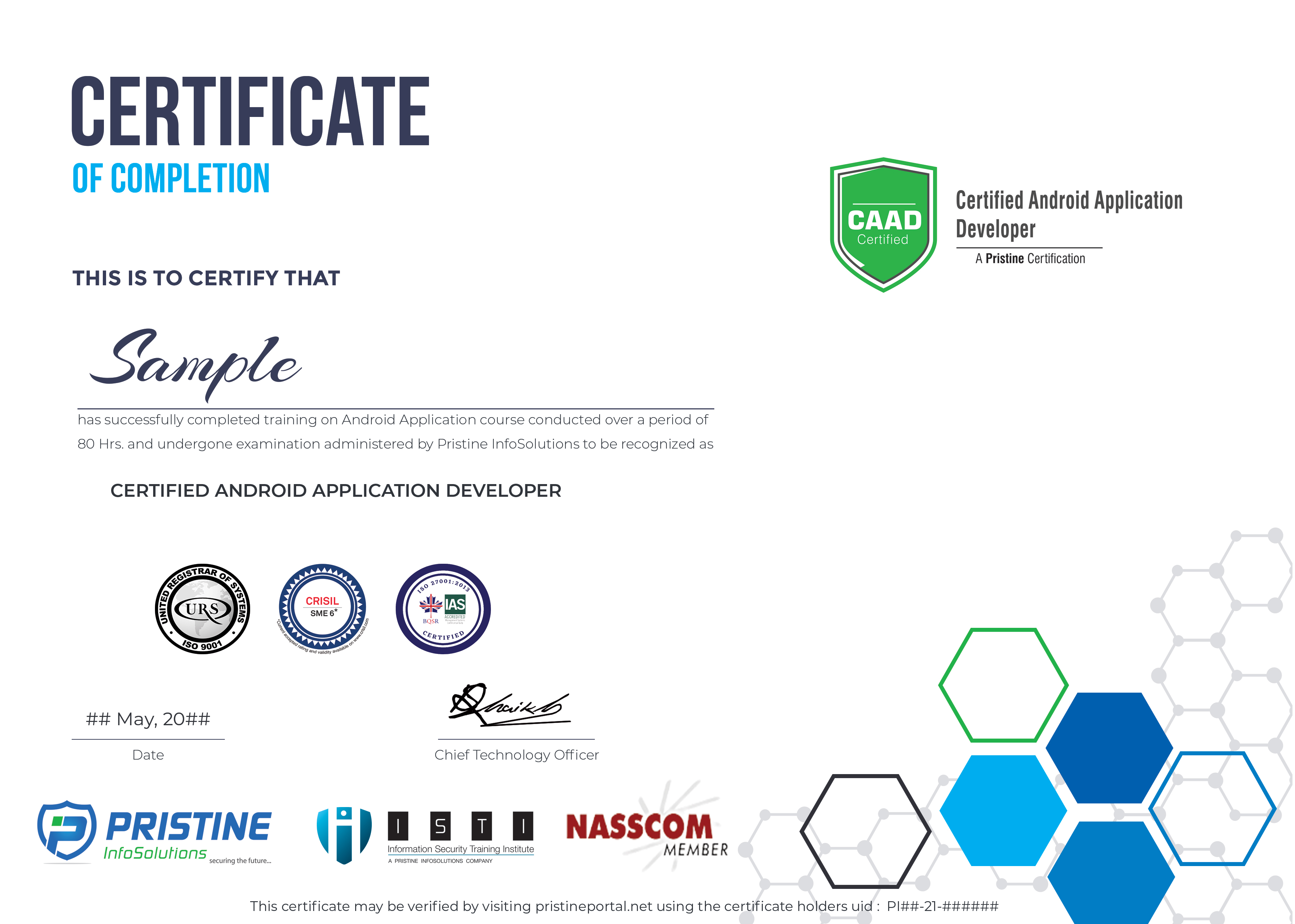

CAAD is a well paced, practical oriented, tutor led hands-on Android course delivered by Pristine InfoSolutions in India, designed to provide essential skills and experience with developing applications on Android platform.
Pristine InfoSolutions has been rated as the best android apps development training institute in India by our students and for our clients it is the most trusted company for android apps development, mobile strategy, design and development.
Since its inception, Android's popularity has skyrocketed, giving mobile application developers plenty of reason to celebrate. Mobile and I-pad application market is growing rapidly and gaining popularity as emerging job opportunities market. If we talk about just India then it's third fastest growing market for Android application development. The Android platform today has built outstanding careers in technology innovation and application development. From games and entertainment, to organizational and all software companies are developing applications for Android and are looking for qualified android developers.
This Certified Android Application Development (CAAD) course is designed to provide essential skills and experience with developing applications on Android mobile platform which will create superstar developers who can think differently and who can build applications quickly. Since its open source, the scope to learn and work is infinite. It is no surprise that Android keeps adding the largest pool of developers worldwide each day. The Android booming industry is struggling to get quality mobile developers; hence the demand for Android application developers is growing and will grow.
Our hands-on program of CAAD in designing and building Android mobile applications will kick start your dream career in Android and will help you develop and fortify your Android development career.
LEARNING OBJECTIVES
This training program offers an interactive environment where you will be trained by an industry expert on how to go ahead with Android Application Development. It also provides each participant with enough resources to start with their application development journey.
Further to that, you also get equipped with skills to,
CAAD Certification Exam
The Certified Android Application and Developer exam will be conducted after completion of the training which will assess and evaluate practical skills of a student. This CAAD certification will provide testament of your practical skills in a real world environment. Students need to pass the online exam to receive CAAD certification.

5
4
3
2
1